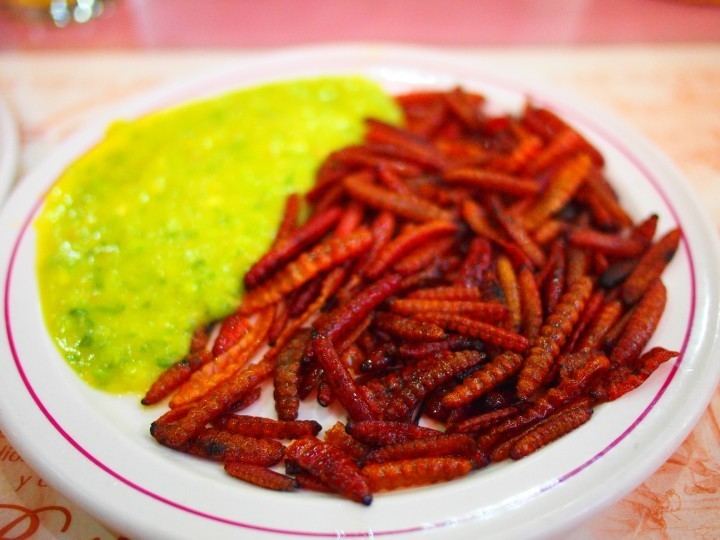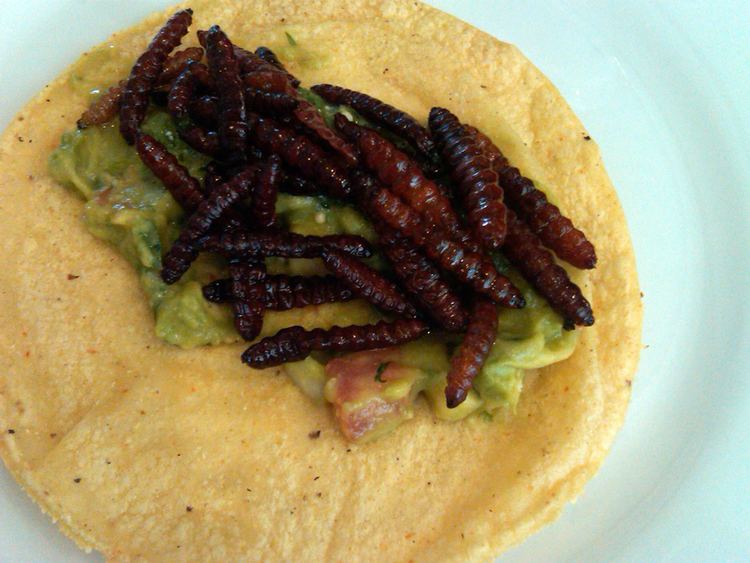Kingdom Animalia Scientific name Aegiale hesperiaris Higher classification Aegiale Order Butterflies and moths | Family Hesperiidae Phylum Arthropoda Rank Species | |
 | ||
Genus AegialeC.Felder & R.Felder, 1860 Similar Comadia redtenbacheri, Acentrocneme hesperiaris, Liometopum apiculatum, Butterflies and moths, Centuryplant | ||
Gusanos de maguey vivos maguey worms
The maguey worm, scientific name Aegiale hesperiaris, (Spanish: gusano del maguey, gu'sanos de magei chinicuil tʃini'kuiles ), is one of two varieties of edible caterpillars that infest maguey (Agave americana) and Agave tequilana plants.
Contents

The white maguey worms, known as meocuiles, are caterpillars of a butterfly commonly named "tequila giant skipper," Aegiale hesperiaris.

Aegiale hesperiaris is found usually in regions of Central Mexico, on the leaves of Family Agavaceae plants, such as: Agave tequilana and Agave americana (maguey). They are not found on cacti, as is often erroneously reported. Aegiale hesperiaris butterflies deposit their eggs at the heart of the leaves of agaves. The larvae then eat the flesh of the agave stems and roots, sometimes boring out the agave completely.
Maguey worm
Others

The red maguey worms are known as chilocuiles, chinicuiles or tecoles, and are the larvae of the moth Hypopta agavis. These infest the core and roots of the maguey plant, often in a glutenous mass. Along with agave snout weevil larvae (mezcal worm), red maguey worms are one of the types of gusanos found in bottles of mezcal liquor from the Mexican state of Oaxaca.
In Mexican cuisine
When fully mature, these caterpillars appear fleshy-red and can measure up to 65 mm (2.6 in). They are considered a highly nutritious delicacy in Mexican cuisine. One 100-gram serving contains over 650 calories, or the equivalent of two plates of rice. While they are sometimes eaten alive and raw, they are also considered delicious deep fried or braised, seasoned with salt, lime, and a spicy sauce, and served in a tortilla.
